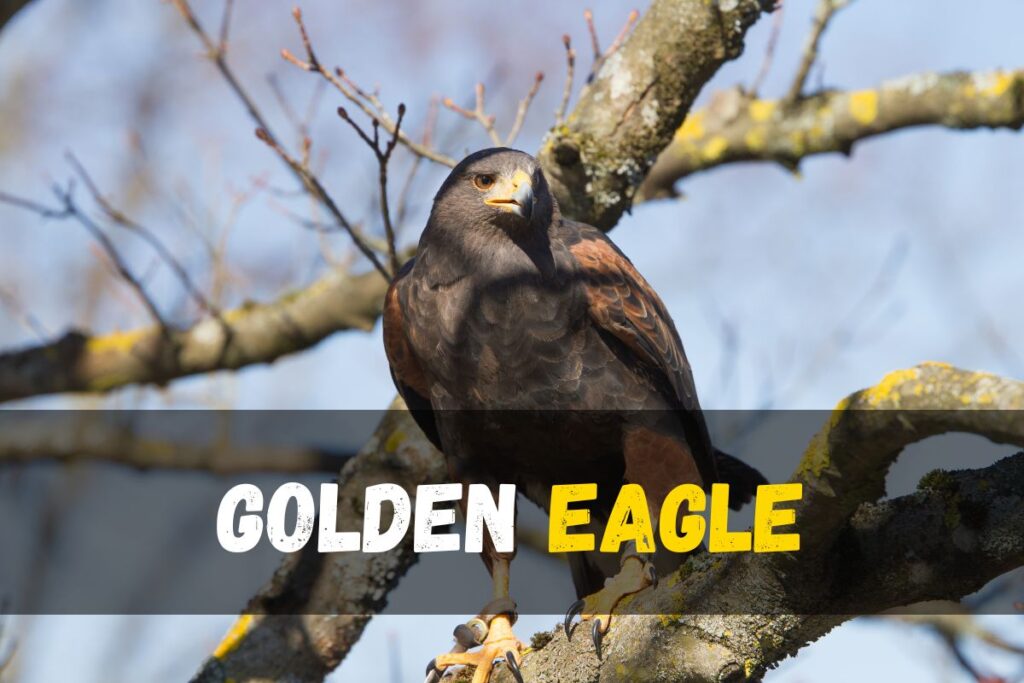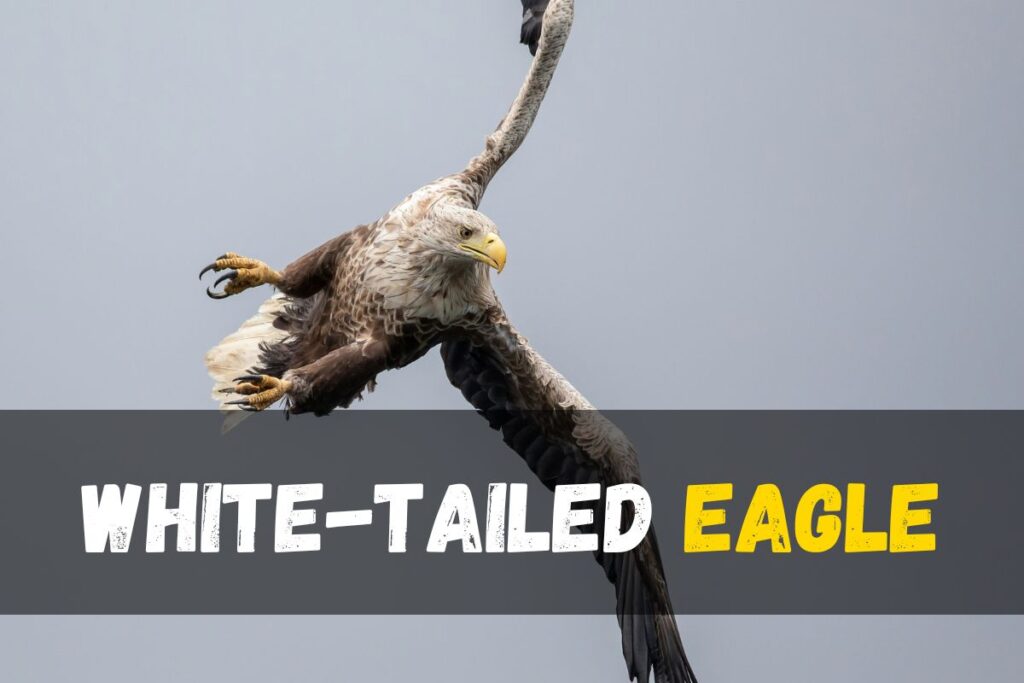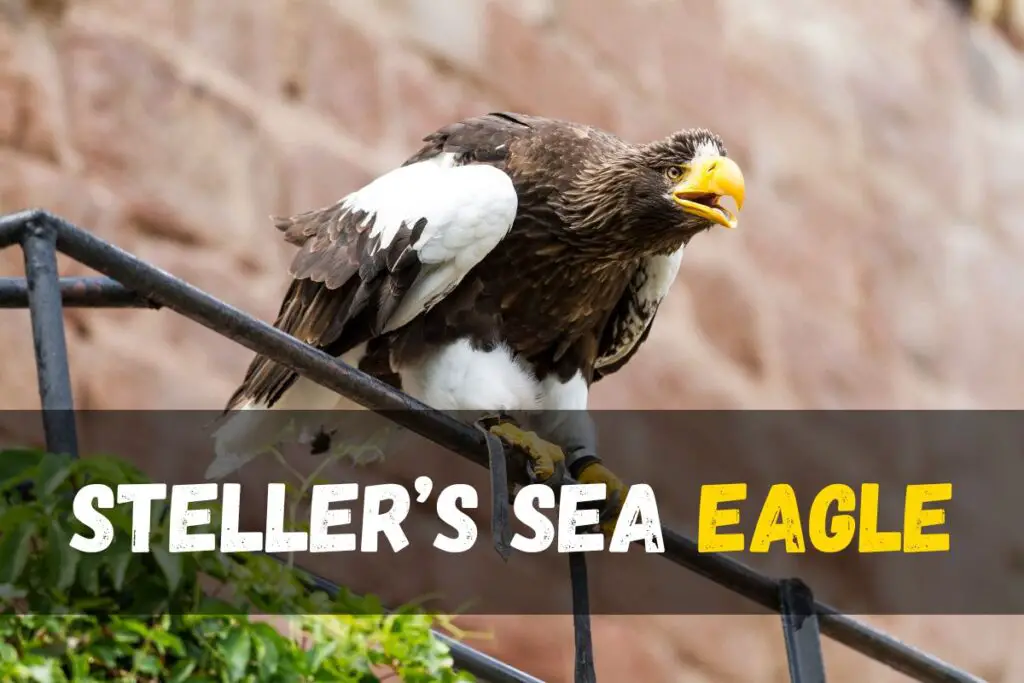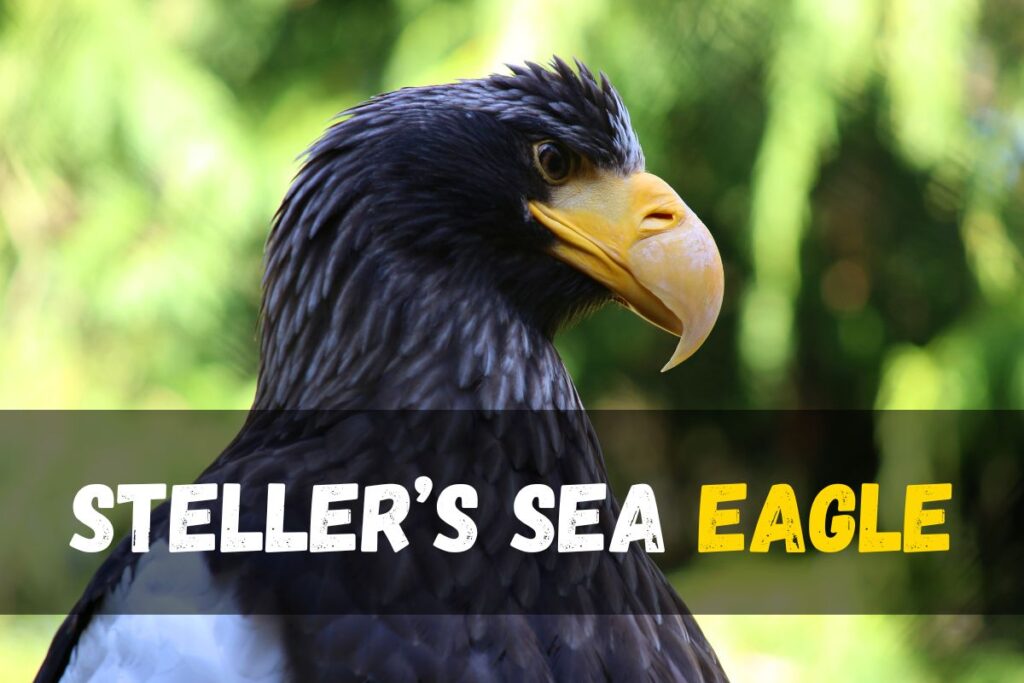Florida, often called the Sunshine State, is a paradise for nature enthusiasts and bird lovers. Its diverse landscapes, ranging from beaches to wetlands and forests Create a welcoming haven for various bird species, with eagles being prominent among them. In this exploration, we uncover the unique characteristics of the eagles that grace Florida’s skies. Both as resident species and as occasional visitors.
Eagles, the symbol of freedom and majesty, are awe-inspiring creatures with wingspans stretching over seven feet. Florida is home to four eagle species, each contributing its flair to the state’s avian diversity. Two of these species are permanent residents, while the other two make occasional appearances during migration, creating a dynamic birdwatching experience for enthusiasts.
The diversity among eagles is not only in their sizes, ranging from the compact Nicobar Serpent Eagle to the impressive Philippine eagle, but also in their symbolism. These birds embody freedom, victory, courage, pride, and royalty. Captivating those fortunate enough to witness their soaring flights across Florida’s landscapes.
Eagles, as diurnal raptors, primarily hunt during the day. In Florida, four main types of eagles find a habitat: true eagles, fish eagles or sea eagles, snake eagles, and forest eagles. Among these, the golden eagle stands out as the sole true eagle resident in the state, while the others belong to the sea eagle category, contributing to the rich tapestry of Florida’s birdlife.
The lives of eagles are as intricate as their symbolism. Monogamous and forming life-long pair bonds, eagles engage in elaborate courtship displays, showcasing breathtaking aerial acrobatics. They construct large stick nests, called eyries, which are reused and augmented with new material each year. The nesting season sees the laying of one to three eggs, with the young, known as eaglets, exhibiting semi-altricial behavior and engaging in fascinating play with their siblings.
19 Types of hawks in Texas
4 Types of eagles in Florida
1. Bald Eagle
The Bald Eagle (Scientific name: Haliaeetus leucocephalus) is an iconic bird, serving as the national bird of the United States and a common sight in Florida. With a lifespan of about 20 years, these majestic creatures boast a size ranging from 28 to 40 inches and weigh between 6.6 and 13.9 pounds. Their wingspan, a remarkable 5 feet 11 inches to 7 feet 7 inches, makes them true giants of the skies.

Identification:
They are easily identified by their striking appearance, featuring a large brown body, a distinctive white-feathered head, and a bright yellow beak. Despite their name, they are not bald; the name is derived from the old English word “balde,” meaning white, referring to the color of their head and tail feathers.

Range:
While once considered endangered, the conservation status changed in 2007, marking one of the most successful recoveries under the Endangered Species Act. Today, they are classified as “Least Concern.” They are not only found in the U.S. but are also known to migrate to Florida during the winter months, particularly from October to April, seeking the warmer climate.
Diet and Foraging Habits:
They are renowned for their impressive foraging habits, hunting primarily for fish but also feeding on mammals, and carrion, and even scavenging for garbage. With unmatched eyesight, they can hunt from as high as 10,000 feet in the air, and their vision, eight times better than humans, extends into the ultraviolet portion of the spectrum. This adaptation aids in locating fish beneath reflections on the water’s surface.
Where to Find This Bird:
In Florida, They are commonly spotted around bodies of water such as lakes, oceans, and rivers. Notably, they nest in tall coniferous trees near large bodies of water. Popular locations for sightings include the Florida Everglades, Chassahowitzka National Wildlife Refuge, and the riverbanks of Crystal River.
Facts about the Bald Eagle:
Bald Eagles engage in a unique courtship display, cartwheeling to the ground while clutching each other’s talons. Contrary to expectations, their vocalizations resemble those of a gull rather than a traditional eagle call. Interestingly, during movie productions, the call of a Red-tailed Hawk is often used for dramatic effect instead of the Bald Eagle’s call.
Long-life Expectancy:
With a lifespan of around 20 years, Bald Eagles can live a substantial period, contributing to their stable and expanding population.
Large Wingspan:
Their impressive wingspan, averaging 80 inches, allows them to soar majestically through the skies, making them a captivating sight.
Habitat:
Bald Eagles prefer nesting in forested areas close to water bodies, emphasizing their affinity for lakes, rivers, and oceans. This habitat choice aligns with their hunting preferences and provides vantage points for spotting prey.
2. Golden Eagle
Identification:
The name “Golden Eagle” is derived from its golden-brown coloration on the crown and nape. The Golden Eagle, scientifically known as Aquila Chrysaetos, is the largest in North America. Its distinct features include a golden-brown crown and nape, dark brown plumage with gray accents, yellow feet, yellowish-brown eyes, and a black bill with a yellow cere. Distinguishing it from the Bald Eagle, the Golden Eagle has feathers down to the top of its feet.

Range:
Golden Eagles are widely distributed, with the North American variant (Aquila chrysaetos canadensis) found throughout the continent. While they prefer open spaces, they are rarer in the eastern half of the United States, with higher sightings in the western US year-round. In Florida, they are uncommon, but the best chances for sightings are during winter around the coast or in marshy habitats like the Everglades National Park.
Diet and Foraging Habits:
Unlike Bald Eagles that primarily eat fish, Golden Eagles are expert hunters of mammals. Their diet includes rabbits, hares, ground squirrels, marmots, and prairie dogs, and they’ve been known to hunt animals as large as small deer, seals, mountain goats, coyotes, and badgers. Remarkably agile, they have even been observed snatching a bear cub for dinner.
Where to Find This Bird:
Golden Eagles prefer vast open areas with cliffs, mountains, and hills, and can be found in various environments, including deserts, arctic tundras, farmlands, forests, grasslands, and along rivers and streams. In Florida, the best places to spot them are the Florida Everglades and the Everglades National Park, especially during the months of spring, particularly in March, when courtship rituals are commonly observed.
Facts about the Golden Eagle:
While the Golden Eagle is the most common eagle species in North America, the Golden Eagle is the only other eagle species that truly calls it home. Golden Eagles are known for their preference for fish in their diet, and they do not have feathers down to their feet.

Long-life Expectancy:
Golden Eagles have a lifespan of up to 20 years in the wild.
Large Wingspan:
These magnificent birds boast a wingspan ranging from 5 ft 11 to 7 ft 8 in, making them the largest birds of prey in North America.
Habitat:
Golden Eagles exhibit a preference for building nests on cliffs, crags, ledges, trees, observation towers, or nesting platforms. They tend to choose locations with a good view of their surroundings.
3. White-Tailed Eagle
The White-Tailed Eagle, scientifically known as Haliaeetus albicilla, is a majestic sea eagle captivating enthusiasts with its impressive features and ecological significance. Let’s delve into various aspects to gain a comprehensive understanding.

Identification:
The White-Tailed Eagle is recognized by its large size, spanning 26 to 37 inches, with a distinctive white tail, brown and buff plumage, and yellow eyes, bill, and feet. Often confused with the Bald Eagle, it can be distinguished by its lighter tan head.

Range:
While predominantly breeding in Europe and Asia, these eagles occasionally venture to the United States, particularly Alaska and Hawaii. In Florida, sightings are rare but possible, especially along coastal cliffs during the breeding season from March to April.
Diet and Foraging Habits:
White-Tailed Eagles exhibit opportunistic predation, consuming a varied diet of fish, birds, and occasionally mammals. During the breeding season, their foraging activities intensify, providing a better chance of observing them hunting, particularly in spring months.
Where to Find This Bird:
Ideal habitats include coastal cliffs, tall trees, wetlands, lakes, and rivers. In Florida, coastal cliffs and woodlands along large rivers offer potential sighting locations. The best chances are during the breeding season when they become more vocal and active.
Facts about the White-Tailed Eagle:
Though similar to the Bald Eagle, the White-Tailed Eagle can be distinguished by its head and tail color. Bald Eagles are more prevalent in the United States, with distinctive white heads and tails.
The Bird’s Name:
The White-Tailed Eagle derives its name from the striking white feathers comprising its tail, a defining feature that sets it apart.
Long-life Expectancy:
These eagles boast an impressive lifespan of up to 27 years in the wild, contributing to their conservation success.
Large Wingspan:
With a wingspan ranging from 5 feet 10 inches to 8 feet, White-Tailed Eagles exhibit impressive aerial prowess, soaring above bodies of water during hunting expeditions.
Habitat:
Historically facing habitat fragmentation due to human development, these eagles thrive in various environments, including coastal cliffs, tall trees, and wetlands. Conservation efforts have aided in their recovery, maintaining a stable population globally.
4. Steller’s Sea Eagle
Steller’s Sea Eagle, scientifically known as Haliaeetus pelagicus, is a magnificent and vulnerable species native to northeastern Asia. With a lifespan of 20-25 years in the wild, these eagles exhibit distinctive features, with females being larger than males and boasting a wingspan ranging from 6 ft 5 to 8 ft 2 in.

Where to Find This Bird:
In Florida, spotting a Steller’s Sea Eagle is a rare occurrence, as they are primarily native to Asia. However, during autumn, there have been occasional sightings of juvenile eagles along coastlines and riverbanks. These juveniles are likely to be found indulging in their unique foraging habits, feasting on dead salmon that fill the rivers during the autumn months.

Identification:
Identification of Steller’s Sea Eagles in Florida can be challenging, but their stocky build, distinctive pied plumage with dark brown and contrasting white feathers on wings, thighs, and tail, along with yellow eyes, bill, and feet, sets them apart.

Range:
The range of these eagles extends beyond Florida, as they are known to winter south of their breeding range. Their habitat includes forested areas near water, where they build multiple nests using sticks, often on rocky outcrops or large trees. Steller’s Sea Eagles are occasionally found in wetlands and coastal environments during winter.
Diet and Foraging Habits:
Their diet primarily consists of fish, but they also target water birds, small mammals, crustaceans, and mollusks. During courtship, they produce distinctive calls, described as a deep “ra-ra-rau-rau,” adding to their unique charm.
Contrary to popular belief, Steller’s Sea Eagles are not to be confused with Bald Eagles, which are a separate species. While both share the large eagle family, Steller’s Sea Eagles surpass them in size, with females reaching weights of over 20 pounds, making them the largest eagles globally.
Long-life Expectancy:
In terms of longevity, these eagles have an impressive lifespan of 20-25 years in the wild, contributing to their significance in the avian world. The rarity of their sightings in America, especially in Florida, adds to the allure of witnessing these majestic birds in their natural habitat.
Explore 30 types of Ducks in Texas
FAQ’S
What is the most common type of eagle?
The most common type of eagle is the Golden Eagle, distinguished by the beautiful golden-colored feathers on the back of its head and neck. These majestic birds are found on every continent in the northern hemisphere.
How big are the eagles in Florida?
The eagles in Florida, specifically referring to Golden Eagles, are typically three feet tall with a wingspan ranging from six to eight feet. They weigh between nine to ten pounds and can live up to 40 years.
What is the strongest eagle?
The Harpy Eagle is the strongest eagle in the world. Weighing an impressive 9 kgs (19.8 lbs.) and boasting a wingspan of 2 meters (6.5 feet). These eagles are considered the most powerful. Despite their wingspan being shorter than that of other large birds, this adaptation is necessary for them to maneuver effectively in densely forested habitats.
What is the difference between a hawk and an eagle?
The primary differences between eagles and hawks lie in their size, wingspans, and physical characteristics. Eagles, notably larger than hawks, have elongated wingspans. While hawks share a similar appearance, a careful observation reveals distinctions. Hawks typically possess more rounded wings, shorter, broader tails, and a stockier build compared to the majestic and grander stature of eagles. These variations in size, wing shape, and build contribute to the unique features that differentiate eagles from hawks.
Which is the No. 1 biggest eagle in the world?
The Giant Philippine eagle is considered the largest eagle in the world based on its impressive length, extensive wing surface, and a height of approximately one meter from the tip of its crown feathers to its tail.
Which is bigger golden eagle or the bald eagle?
The given content provides information about the size of eagles, mentioning that males in both species are about 2.5 feet, head to toe, with a wingspan of six to seven feet and a weight upwards of 10 pounds. However, it is noted that females, like many raptors, are larger. To specifically address the question of which is bigger between the golden eagle and the bald eagle, the information provided is not sufficient. The content doesn’t directly compare the size of the golden eagle and bald eagle. Therefore, it is not possible to generate a meaningful answer to the question based solely on the information given. Additional information about the size of golden eagles and bald eagles would be needed for a more accurate comparison.
What are the 7 principles of eagle?
- Strong Vision: Eagles have exceptional vision, enabling them to see with clarity and focus on their goals.
- Guided by a Clear Vision: Eagles are guided by a clear vision, emphasizing the importance of having a well-defined direction in life.
- Feed on Fresh Prey: Just as eagles feed on fresh prey, individuals should seek new and relevant opportunities for growth and development.
- Innovative and Creative: Eagles exhibit innovation and creativity, encouraging individuals to approach challenges with a fresh perspective.
- Love the Storm: Similar to eagles, facing and embracing challenges is crucial for personal and professional growth.
- Relish and Overcome Challenges: Eagles relish challenges and overcome them, highlighting the importance of resilience and determination in achieving success.
- Test Before They Trust: Like eagles, individuals should exercise caution and assess situations before placing their trust, emphasizing the value of earned trust.
These principles serve as a guide for individuals to achieve success, demonstrating the qualities embodied by eagles in their performance and behavior.


